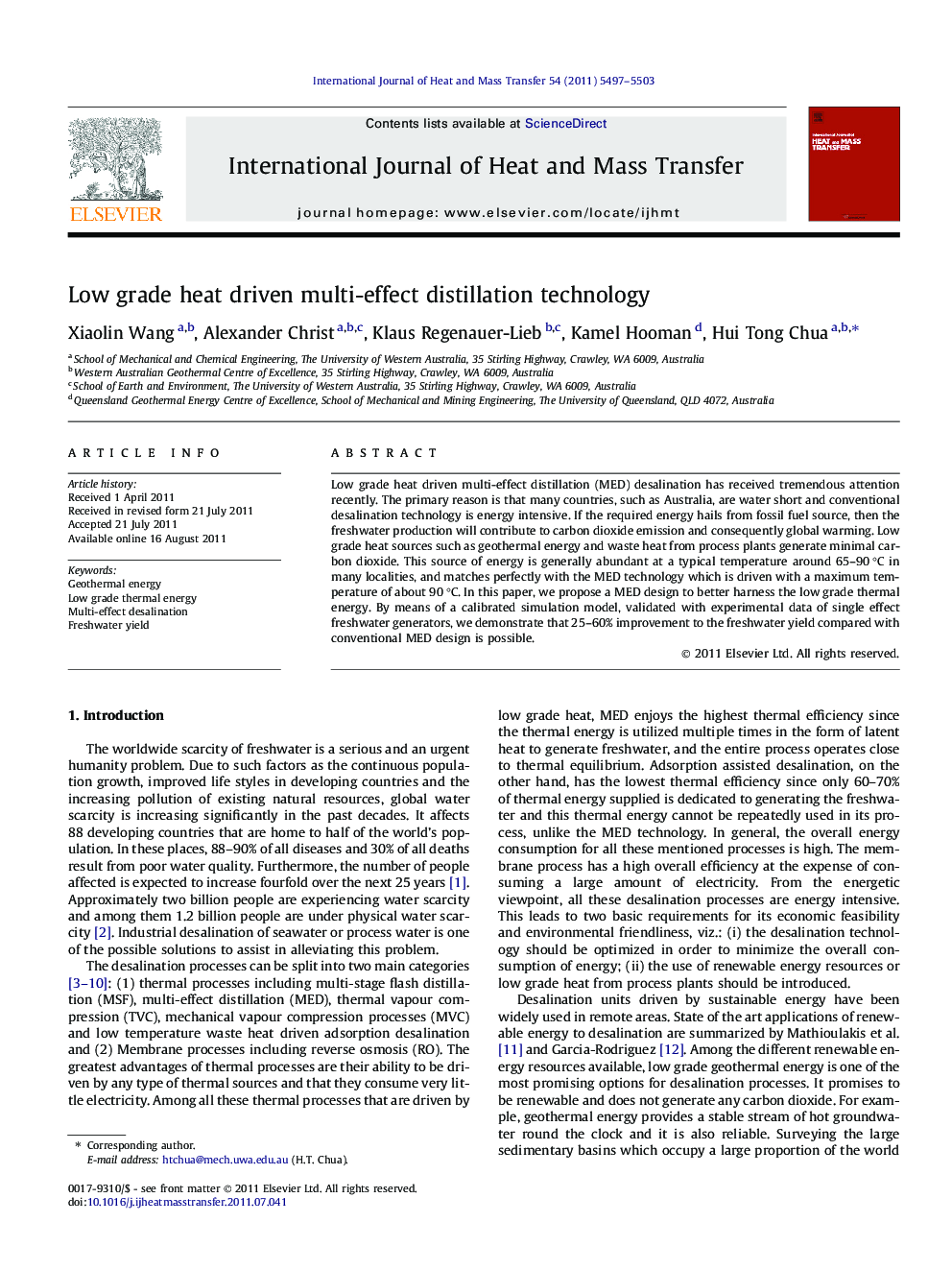| Article ID | Journal | Published Year | Pages | File Type |
|---|---|---|---|---|
| 659390 | International Journal of Heat and Mass Transfer | 2011 | 7 Pages |
Low grade heat driven multi-effect distillation (MED) desalination has received tremendous attention recently. The primary reason is that many countries, such as Australia, are water short and conventional desalination technology is energy intensive. If the required energy hails from fossil fuel source, then the freshwater production will contribute to carbon dioxide emission and consequently global warming. Low grade heat sources such as geothermal energy and waste heat from process plants generate minimal carbon dioxide. This source of energy is generally abundant at a typical temperature around 65–90 °C in many localities, and matches perfectly with the MED technology which is driven with a maximum temperature of about 90 °C. In this paper, we propose a MED design to better harness the low grade thermal energy. By means of a calibrated simulation model, validated with experimental data of single effect freshwater generators, we demonstrate that 25–60% improvement to the freshwater yield compared with conventional MED design is possible.
